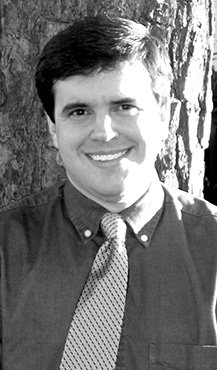“None of us knows what we are capable of until we are tested,” once said Dr. Elizabeth Blackwell, as she reflected on her long career. To be the first in a male-dominated field in a time when women had few rights led her to be tested many times. Because of her determination, Blackwell became the first woman physician in the United States, paving the way for others to follow.
Elizabeth Blackwell was born in England in 1821. She was the third of nine children born to Samuel Blackwell, a sugar refiner and lay preacher, and his wife. Her father made sure that all of his children had the best education possible through the private tutors he hired, including for his daughters, which was very unusual at the time.
Disaster struck in 1832 as a fire destroyed the sugar refinery. The family was nearly ruined financially, and they left for New York to start over. Shortly afterward, the family settled in Ohio. Their father died in 1838, leaving the family with many debts and little money. To help bring in money, Elizabeth Blackwell and two of her sisters started a school in Cincinnati.
Blackwell would end up taking teaching positions with her older sisters in Kentucky and North Carolina before returning to Ohio. After caring for a friend through a difficult illness, Blackwell developed an interest in studying medicine. However, because she was a woman, every school she applied to turned her down.
Finally, she applied to Geneva Medical College in New York. Though she clearly met the academic standards and could afford the tuition, college officials were concerned about admitting a woman. In an unprecedented move, the matter was discussed with the students and a vote was taken on whether to admit Blackwell. The students decided to admit her, and in 1847 at the age of 26, Elizabeth Blackwell became the first American woman to attend medical school. She still faced many obstacles because of being a woman. She noted years later, “The idea of winning a doctor’s degree gradually assumed the aspect of a great moral struggle, and the moral fight possessed immense attraction for me.” She graduated in 1849 as the first woman doctor in the nation.
Blackwell soon published a paper in the Buffalo Medical Journal in New York on the spread and treatment of the deadly typhoid fever. This was also the first medical article written by a woman published in the United States. After expanding on her medical studies in Europe, she returned to New York City. Here, she opened a small clinic in 1853 that gradually expanded into a charity hospital for the poor.
Her siblings managed to have remarkable lives of their own. Her sister Sarah became a noted biographer. Two brothers, Samuel and Henry, became prominent abolitionists and women’s rights activists. Her sister Emily was so inspired by her medical education that she attempted to enroll at Geneva College as well. However, her attempt failed. A college in Illinois expelled her after being threatened with closure. She was finally admitted to what is now Case Western Reserve University in Ohio where she earned her medical degree in 1854, becoming only the third American woman to graduate from medical school.
During the Civil War, Blackwell helped organize nurse training for the Union war effort. With her headstrong and determined nature, she often clashed with officials with the United States Sanitary Commission, leading her to create the Woman’s Central Relief Association to continue training nurses to her high standards.
In 1874, Blackwell, along with her sister Emily, Florence Nightingale, and others established the London School of Medicine for Women. This was the first medical school in the world established specifically to train women as physicians. It still operates as part of the prestigious University College London Medical School.
Blackwell retired from the medical school and from medicine in 1877. She spent the next several decades touring across Europe and the United States, giving lectures and writing extensively on all sorts of social and moral reform movements active at the time. Public health and encouraging its instruction in schools became a topic of great interest to her as well as calls for women’s suffrage. Eventually, she settled permanently in England. She continued to travel the world on lecture tours well into her eighties.
In 1907, Blackwell was seriously injured in a fall down a flight of stairs while visiting Scotland. She died at her home in England in May 1910 at age 89. Her sister Emily died three months later. Today, there are nearly 370,000 women physicians in the United States, practicing in all fields of medicine. This includes more than 2,100 women in Arkansas, nearly 30% of all doctors active in the state.
Dr. Ken Bridges is a professor of history and geography at South Arkansas Community College in El Dorado and a resident historian for the South Arkansas Historical Preservation Society. Bridges can be reached by email at kbridges@ southark.edu.
